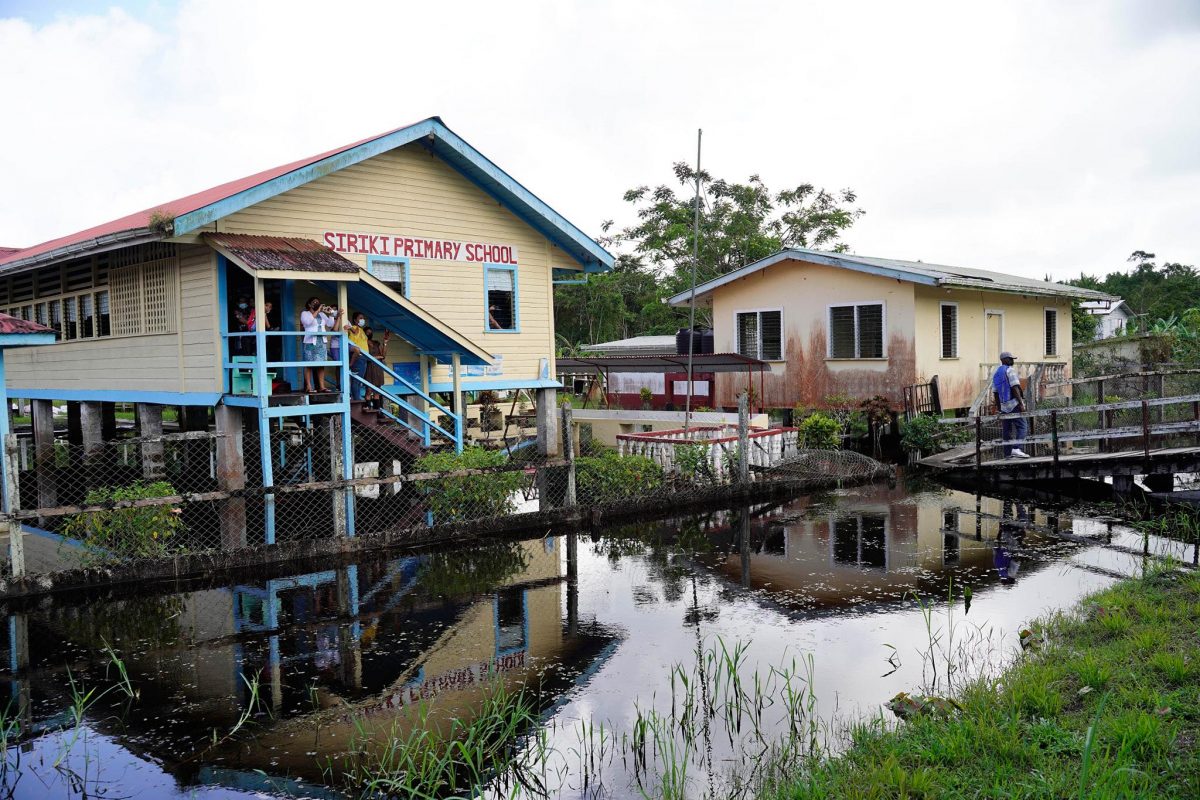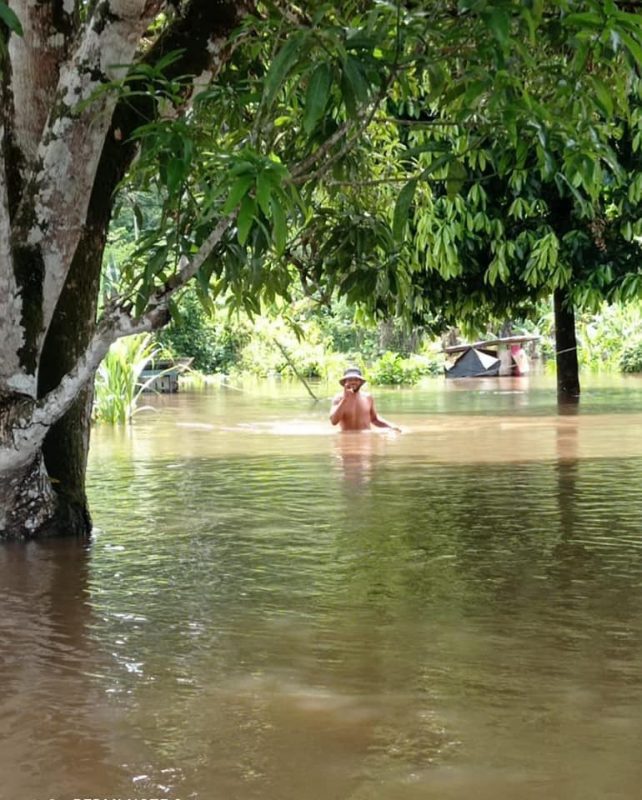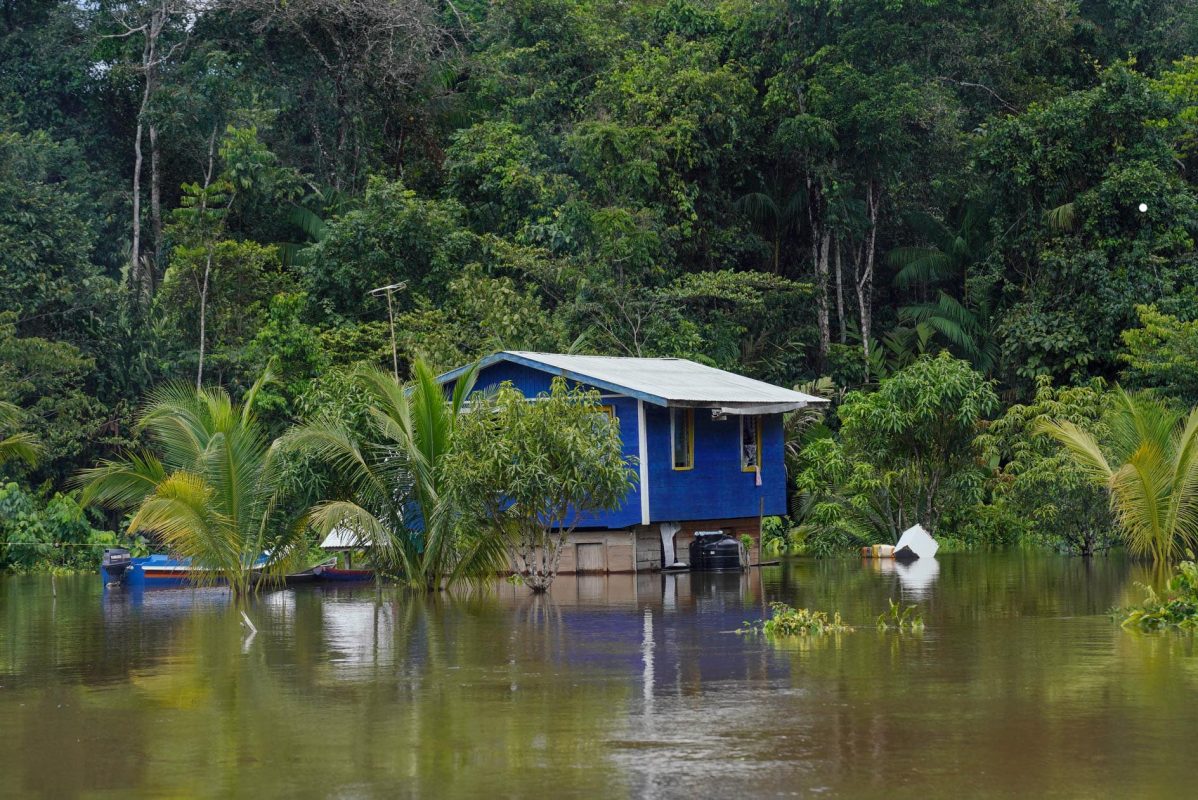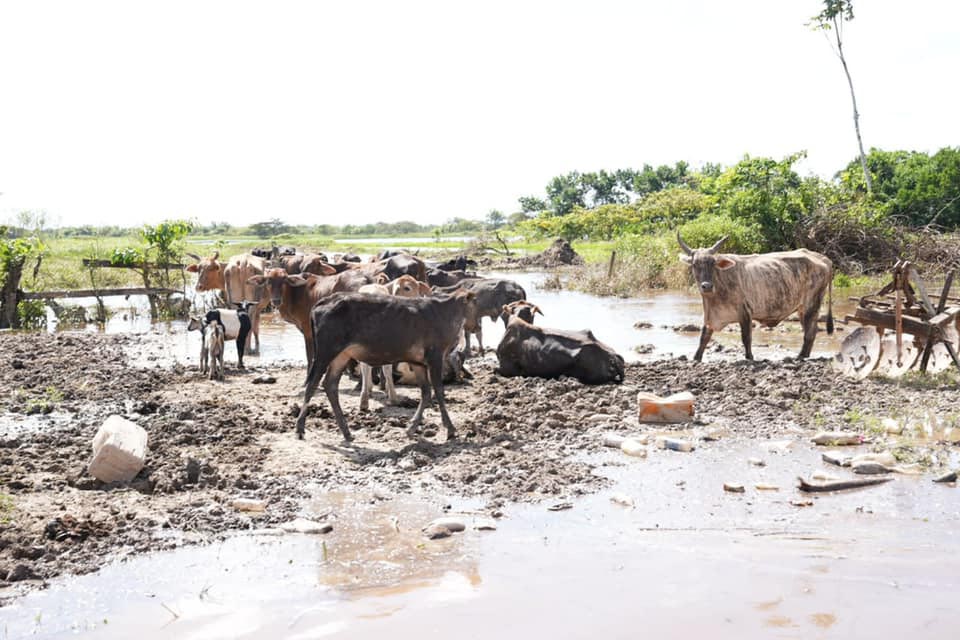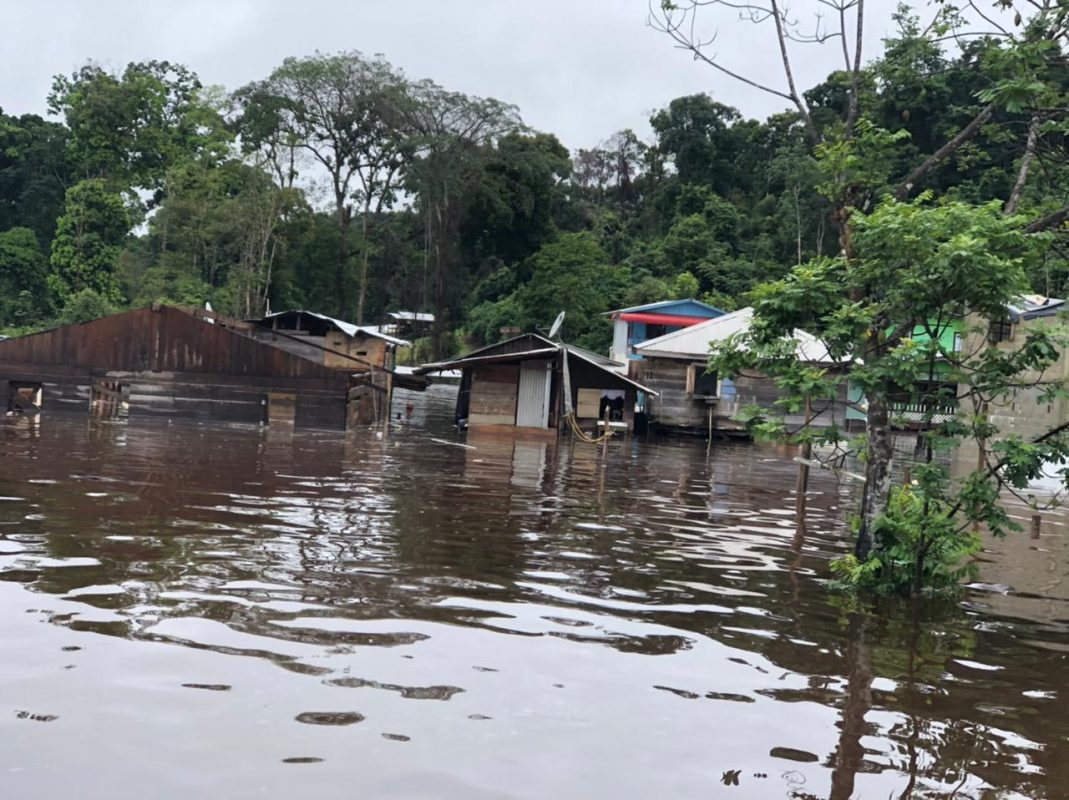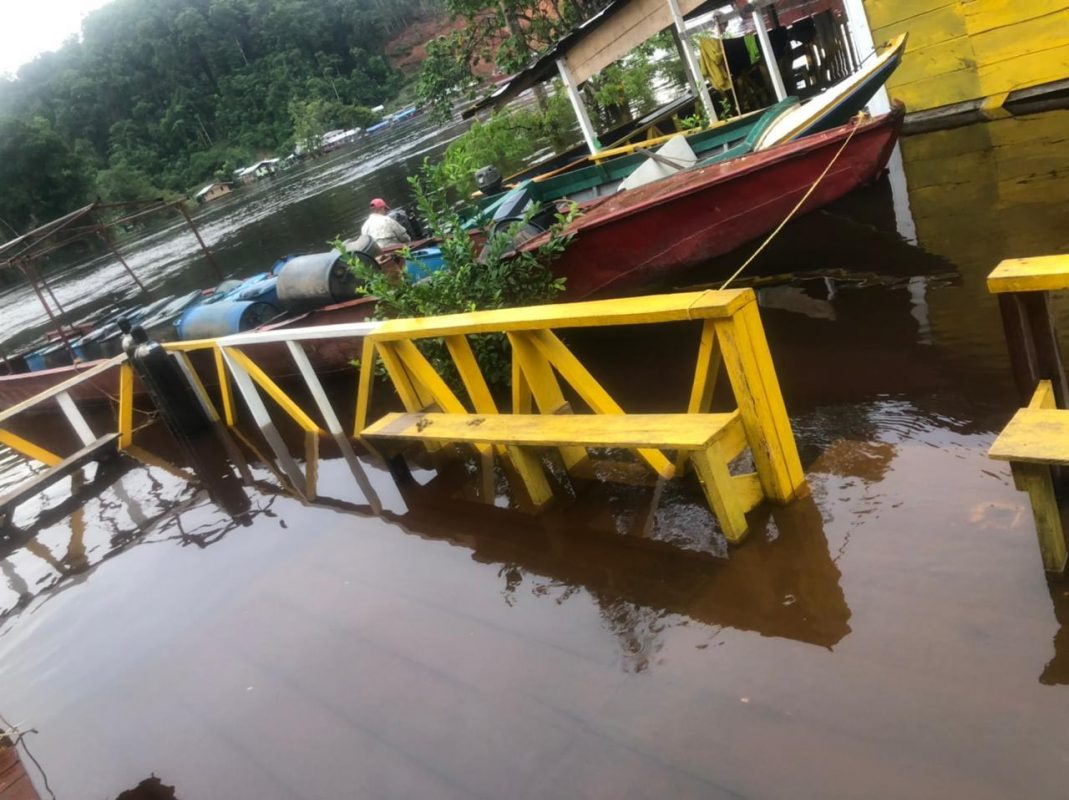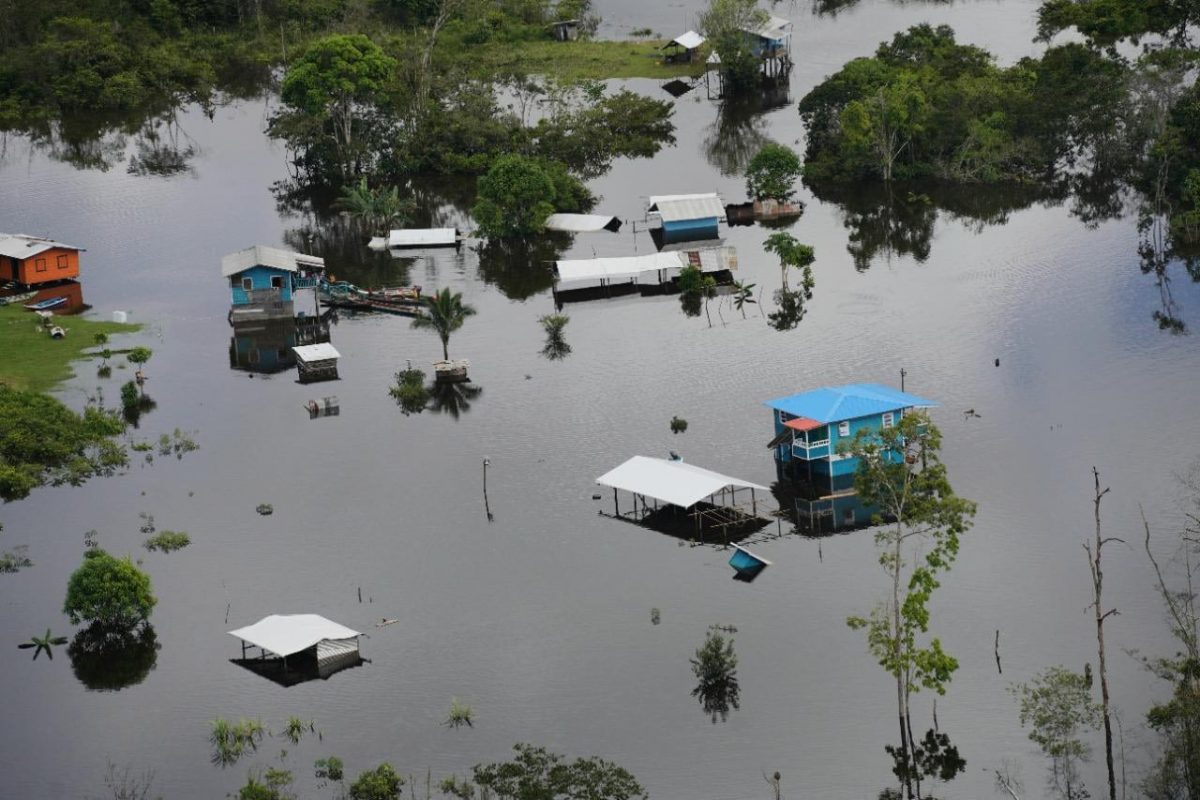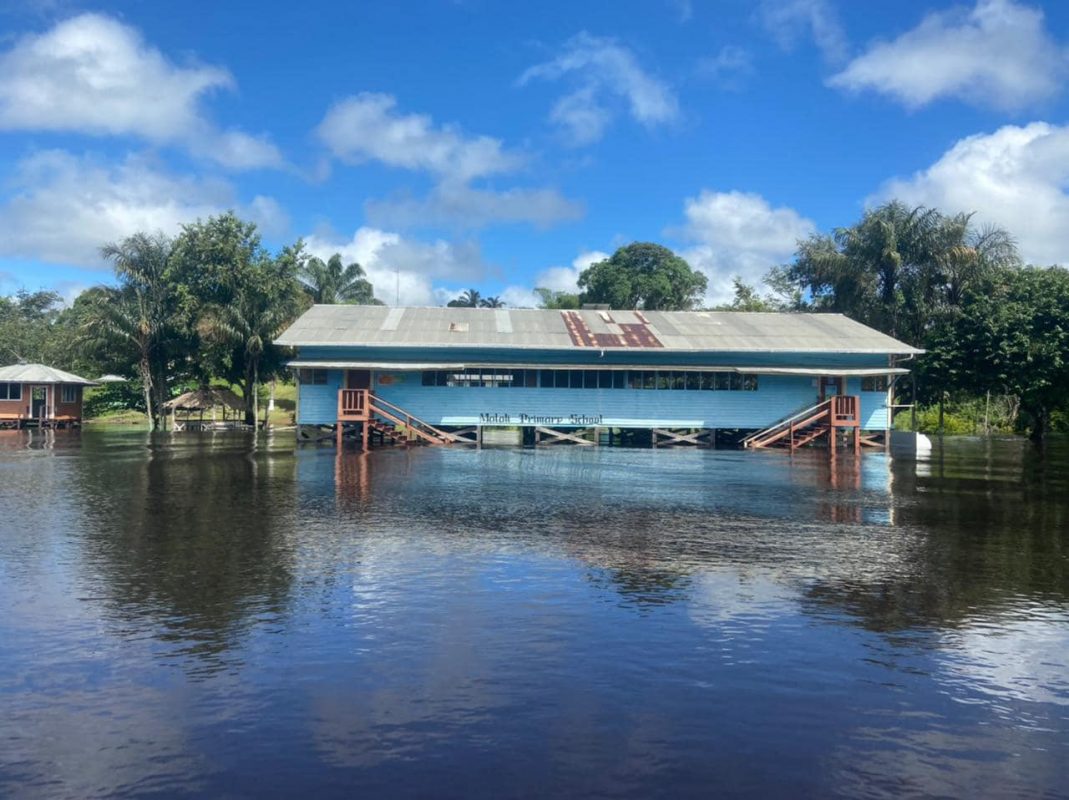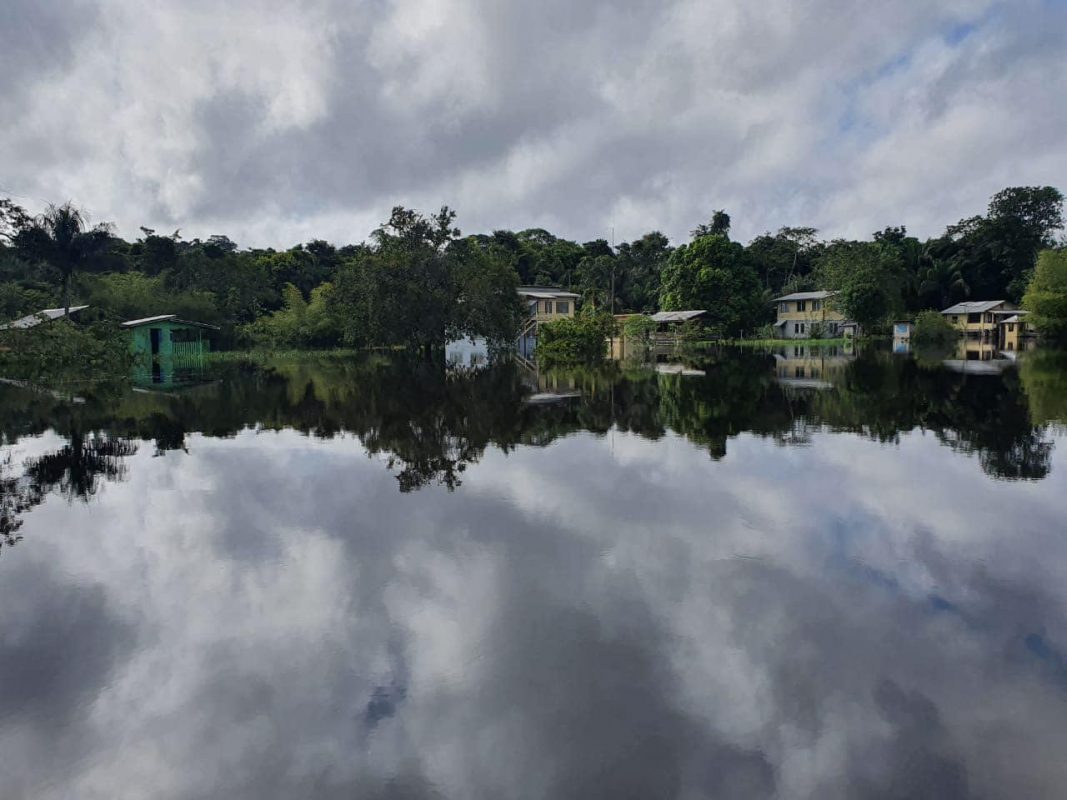Despite a respite in some areas, floodwater remained at significant levels in most of the country’s regions yesterday as authorities continued to mobilise help for victims.
Residential and farm lands along the riverine villages in regions 1, 2, 5, 7, 8, 9 and 10 are the worst affected and the respective Regional Chairs have concluded that these communities will face economic hardships in the coming months as the floods have decimated the livelihoods of many.
Region Two Chairperson Vilma Da Silva reported that homes and yards are flooded in the Upper Pomeroon River area, while mainly farmlands are affected in the lower Pomeroon River section.
“At least five families had to be relocated from the Karawab Village because of the height of water. We had to find shelters there for these families,” she stated as she pointed out that neighbouring villages, like Kabaka-buri and St Monica, are also affected.
In some areas, she noted, the water has risen to 8 feet.
As a result, Da Silva said many residents had requested higher lands for relocation when they met with President Irfaan Ali during his visit to the region on Sunday.
While addressing residents, Ali assured that the government will be doing “…everything to secure back your livelihood. We are going to do everything to get you back to the farmland.”
Ali visited nine riverine communities along the Pomeroon River to assess the impact of rising floodwaters that have been caused by heavy and intense rainfall over the last two weeks.
The villages included Karawab, St Monica’s Mission, Kabakaburi, Abrams Creek, Siriki, Jacklow, Martindale, Marl-borough, and Hackney.
According to Da Silva, on the lower Pomeroon they are looking to improve the drainage system and capacity as there isn’t effective drainage in some communities.
“Some of the kokers here are not working fully and when the tide drops, in the river it is still high on land so we have to improve and flush out the drains. But also we have to look at a system that will help us because at the lower end all the water from upper Pomeroon gravitates to us, so we need a system that will work,” she stated.
She added that the region through the Civil Defence Commission (CDC) has been distributing food and sanitation hampers to affected households across the Pomeroon.
“We are committed to assisting these families because they have lost their livelihoods. All the cash crops are dead and long-term crops are dying,” she said.
Da Silva added that with all the drainage and irrigation pumps working on the coast, there has been limited flooding there.
Devastation
In Region Seven, Middle and Upper Mazuruni continue to be devastated by flooding as water levels have been climbing. Regional Chairman Kenneth Williams yesterday said that communities like Waramadong, Kama-rang and Kako, in the Upper Mazaruni, remain inundated and hundreds of farms are waterlogged as are dozens of homes.
However, he said Quebenang and Jawalla are the two worst affected communities in the district.
With the villages such as Isseneru and Kangaruma, in the Middle Mazaruni, exposed to the extreme high tides and many businesses and homes inundated, Williams said they are aiming to bring flood relief to those communities by mid-week. Two persons have opted to move into the shelter set up at the Kangaruma Health Centre.
According to the Chair-man, the region’s greatest concern is that villages in both the upper and lower Mazaruni continue to report “economic devastation” of their livelihoods and that the floodwater in most communities has not receded significantly. “As a matter of fact, some areas have experienced higher levels than yesterday (Sunday),” he said.
Ali, during his visit to the flood-hit region on Saturday, said that initial estimates indicate that some 60 households have been affected and that approximately 169 farms were inundated. The flooding in the Akawaio community is one of the worst in decades.
“I am here personally to let you know that we understand your pain—we feel your pain. I want to commit to you, that you will get help and the Government will help the community and the farmers,” he said.
In the interim, he said that the focus would be on getting people to safe and secure locations and to ensure that they have food and other emergency supplies, a statement from the Office of the President said on Saturday night.
Residents who are concerned about water-borne diseases have requested mosquito nets, rain boots and water tanks, the CDC said on Sunday.
Deron Adams, Chairman of Region Ten, said water levels have begun to rise in Rockstone and 10 persons have been moved into two shelters that were set up.
“The water is rising there and we have move six persons into the community guest house and four persons into the school. But their immediate needs right now is mattresses, pots, food supplies, tanks and water purification tablets,” he reported.
Touching on the flooding in Kwakwani, he said the water level there has dropped by a few inches but the flooding remains relatively high.
Along the Berbice River, he added, more shelters have been set up to accommodate more families as they are unable to remain in their homes.
In the communities of Muritaro and Malali over 100 families have been affected, Adams said, and several families had to also be placed in shelters as water levels continue to cause discomfort.
“We are working closely and monitoring every situation to see how best we can help these families. We have been distributing hampers donated by the private sector and the CDC to assist these families,” he added.
Receding
Meanwhile, Region One Chairman Brentnol Ashley said communities like Kariako, Kokerite and Chinese Landing along the Barima River, North West District, are still flooded.
Due to the high tides and constant rainfall, he added, the water levels remain high and the regional council is closely monitoring and evaluating how best it can offer assistance.
At the same time, he noted that communities like Arakaka, Citrus Grove, Black Bariman, Moruca, among others which were flooded during unrelenting rainfall over the past two weeks, are now flood-free.
However, he stated that with the high tides, low lying communities will be flooded even as efforts will be made to improve drainage in those areas.
Ashley further stated that teams comprising key stakeholders and health officials have been visiting and conducting assessment in the communities to better respond to their needs.
Region Six Chairman David Armogan stressed that “all possible interventions to ensure that the water recedes quickly as possible” are being made throughout Region Six.
He reported that floodwater had receded drastically in areas like Babu Jaan, Corentyne, old and new Chesney, Bangladesh, Hogtown, and Mara.
However, he noted, that the Ankerville, Port Mourant, Corentyne area still remains flooded as the water from the backlands continues to enter the surrounding villages. He explained that initially they were going to place a plug at the location but a resident objected, claiming that he would be affected by the mud.
Armogan yesterday confirmed that the workmen returned to the area, where they placed the plug. “We can’t just let one resident decide what to do and all the other residents are affected,” Armogan said.
According to him, in addition to the mobile pumps and stationary pumps, between 30 and 40 rice field pumps have been sourced to be placed at various locations throughout the region. He stressed that the improved situation was as a direct result of the council pumping water out of the villages.
He then related that the region has 13 machines, all of which are currently carrying out emergency works, while it has also hired around 20 additional machines to assist with the works.
While Armogan stressed that a major issue is the overtopping of the Canje Creek, he remained hopeful that if the heavy rain does not continue then the region can return to some normalcy within a week’s time.
Residents yesterday also reported, that the water had receded greatly in various sections of the residential area in Black Bush Polder. However, cattle farmers who faced the brunt of the flooding continued to return to the backlands in hopes of locating and rescuing as many animals as possible.
One farmer from the Upper Corentyne area related that the cattle farmers have teamed up in the area as they collectively work to rescue the animals.
In Region Three, Regional Chairman Inshan Ayube said that water has been receding slowly. Nonetheless, he pointed out that many farmlands remain inundated and as a result additional pumps have been dispatched to aid with the swift discharge of water.
He further stated that with no rains within the past 48 hours, the water levels in the Boerasirie Conservancy remain manageable.
In Region Five, Regional Chairman Vickchand Ramphal said water levels have receded from most coastal lands but areas like Big Biaboo and Wash Clothes, Mahaicony are now flooding. This situation, he explained, is being monitored by the region.
He stated that they are also monitoring the flooding in Moraikabai, Mahaicony River as the water levels have been fluctuating.
To assist families, Ramphal said, hundreds of hampers were distributed through partnerships between former residents of Mahaicony and the CDC. He stated they are preparing to distribute 500 cases of water to residents in the flood affected communities, which have highlighted the need for water.
